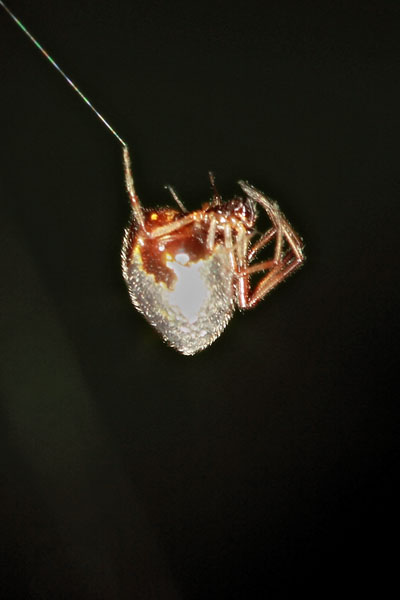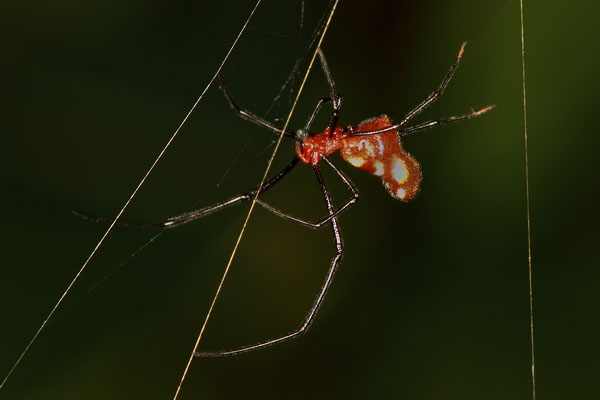A couple of my friends and I decided to drive to the outskirts of Bangalore and try our luck with photographing some wildlife; the primary focus was birds. However, it turned out to be a dull morning with an overcast sky. So, much of the morning was spent searching the shrubbery for other little things that could be photographed. We found an assortment of subjects and were not disappointed.
When the light improved, we headed towards a small water body to try our luck with birds. We were driving along the hedge of the country road when I saw a few webs of the Giant Wood Spider Nephila sp.; I asked for the car to be stopped. With prior knowledge that Silver Spiders Argyrodes sp. (Comb-footed Spiders; Family Therididae) reside on the web of other orb weavers, particularly the Giant Wood Spiders, I wanted to try my luck photographing these tiny spiders. They get their common name because most of them have silvery spots on their bodies. I was looking for a particularly tiny spider which is easily seen as most of its body is silvery and difficult to miss on the webs of the Giant Wood Spiders.
 Argyrodes argentatus
Argyrodes argentatus
I was quite elated to see the spider that I wanted to photograph and set about the task earnestly. The small size of this spider, coupled with breeze and other movements on the web offered quite a challenge! While in the process of photographing the Quick Silver Spider Argyrodes argentatus (also known as the Silver Comb-footed Spider), I noticed another slightly larger spider on the web of the Giant Wood Spider. It was bright orange with some silver spots on its abdomen. Since it was not on its own web, I suspected it also to be a species of Argyrodes. I made good the opportunity and quickly clicked some pictures. It turned out to be the Red Silver Spider Argyrodes flavescens!

Argyrodes flavescens
Both these species of Argyrodes as their congeners, live on the periphery of the webs of other larger spiders. This gives them access to the prey caught in the host’s web. They help themselves to the trapped insects or steal prey stored by the host. This makes them kleptoparasites! If a large prey is caught, they partake in the meal with the host. Perhaps, the hosts ignore them because of their tiny size. Sometimes they feed on the leftovers on the web. Hence, they can be considered as commensals. The relationship the Silver Spiders have with their hosts depends on factors like the size of host in relation to the Silver Spider and the speed with which the host eats up the prey. During lean times some Silver Spiders are known also to eat the web of the host! How this affects the host is poorly understood.